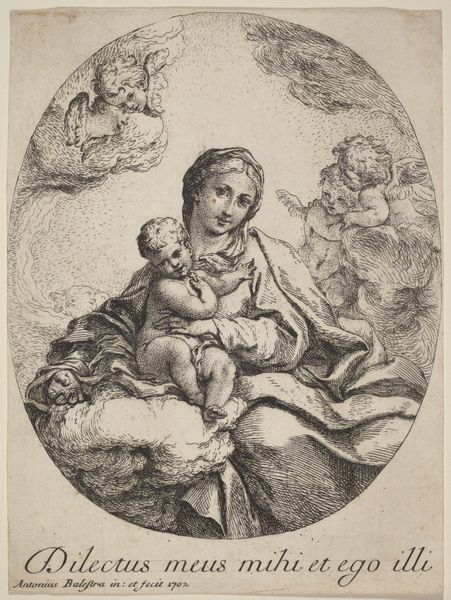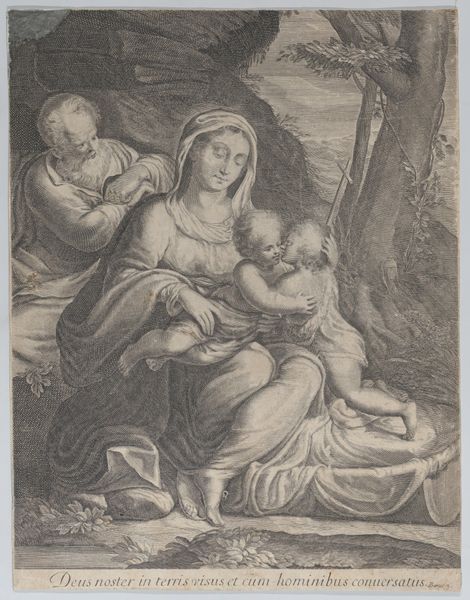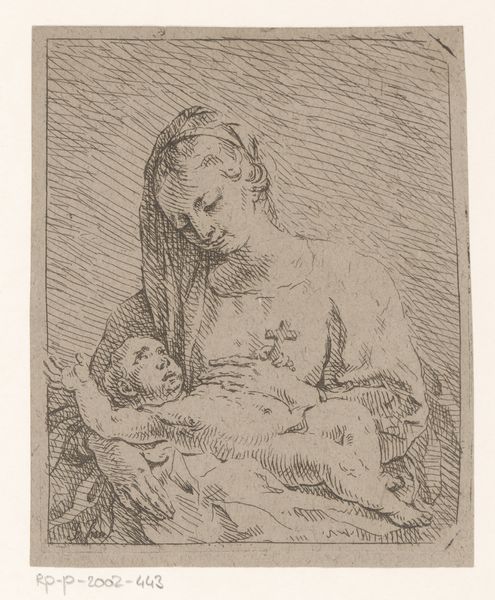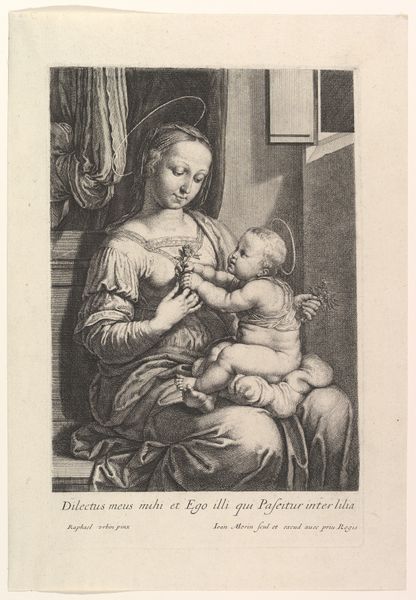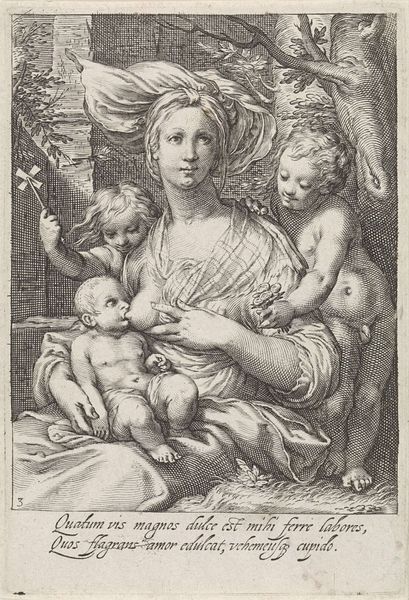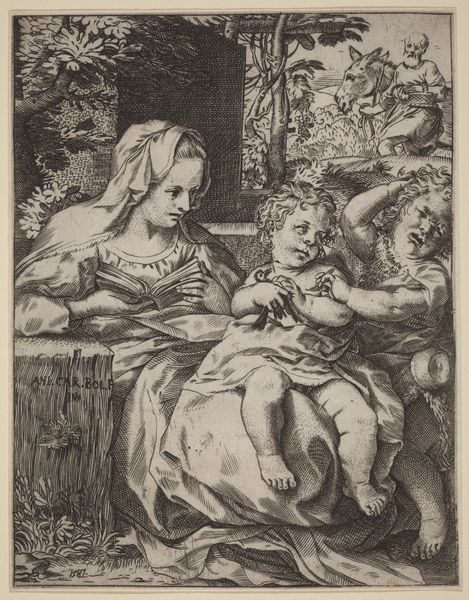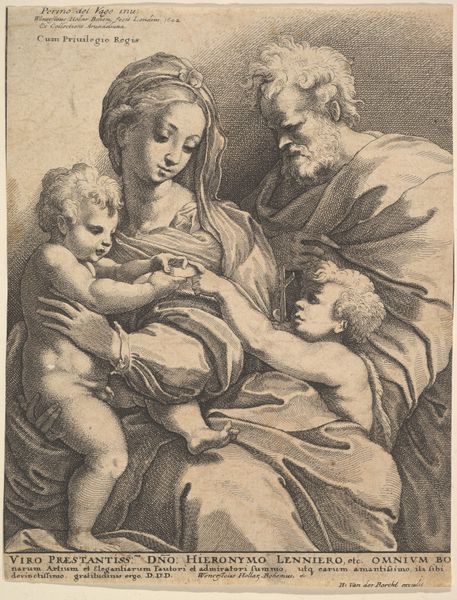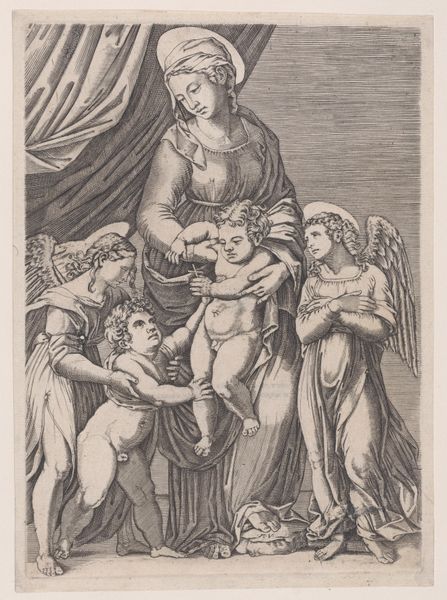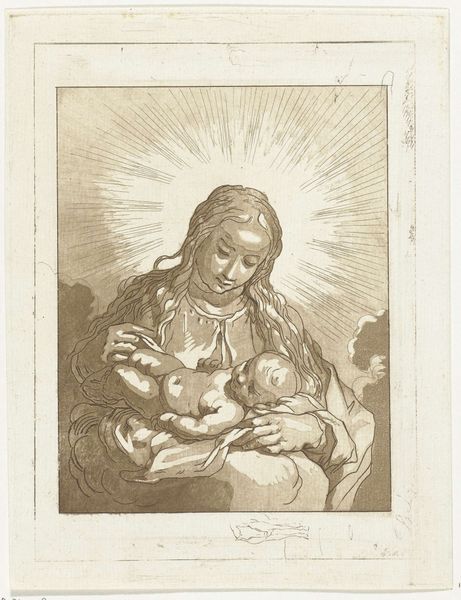
print, etching, engraving
#
portrait
# print
#
etching
#
old engraving style
#
figuration
#
history-painting
#
italian-renaissance
#
nude
#
engraving
Dimensions: height 190 mm, width 166 mm
Copyright: Rijks Museum: Open Domain
Curator: Looking at this print, “Maria met Kind” from Teresa del Po, created sometime between 1656 and 1716 and currently held in the Rijksmuseum, the overwhelming impression is one of serenity, wouldn’t you say? A certain tenderness emanates from it. Editor: It’s true. The way Mary is depicted feels almost voyeuristic in its intimacy. You almost forget the political function that art played for a long time. How do you think depictions of motherhood were evolving at this point in history, particularly considering the socio-political lens? Curator: The Italian Renaissance, from which this engraving draws inspiration, wrestled significantly with idealizing motherhood. I think it's critical we analyze not just its spiritual meaning but its public one. By associating Mary with an innocent child, the piece could also function as social propaganda around family virtues or perhaps challenge traditional hierarchies and familial roles by subtly putting women at the forefront. The distribution and the audiences it could reach become crucial, particularly through prints like this one. Editor: Definitely. I'm thinking about the way the material itself, engraving and etching, facilitated broader circulation and accessibility for certain demographics. To me, one can argue the use of classical figuration—almost nudelike, certainly vulnerable—serves an underlying role to naturalize patriarchal norms, perhaps softening it, rendering them unreadable to the mainstream public of the time, as well as offering more visibility to a historically male-dominated form. The art market played an enormous part too; there was growing demand for engravings and accessible images amongst the growing middle class, offering the opportunity to create a piece of devotional, beautiful art and market the same work at large scale. Curator: Interesting, that intersection is key—devotional yet consumable, powerful in that dichotomy. The figures portrayed reflect a societal construct about divinity that goes beyond what first meets the eye, which the piece may even subvert with such gentle closeness. Editor: I hadn't thought of it that way, very insightful indeed. Examining “Maria met Kind,” brings attention to the multifaceted nature of both divinity and representation, demanding careful analyses and consideration. Curator: Absolutely. An important contribution to a continually developing visual conversation, a very intimate perspective with potential societal implications.
Comments
No comments
Be the first to comment and join the conversation on the ultimate creative platform.
